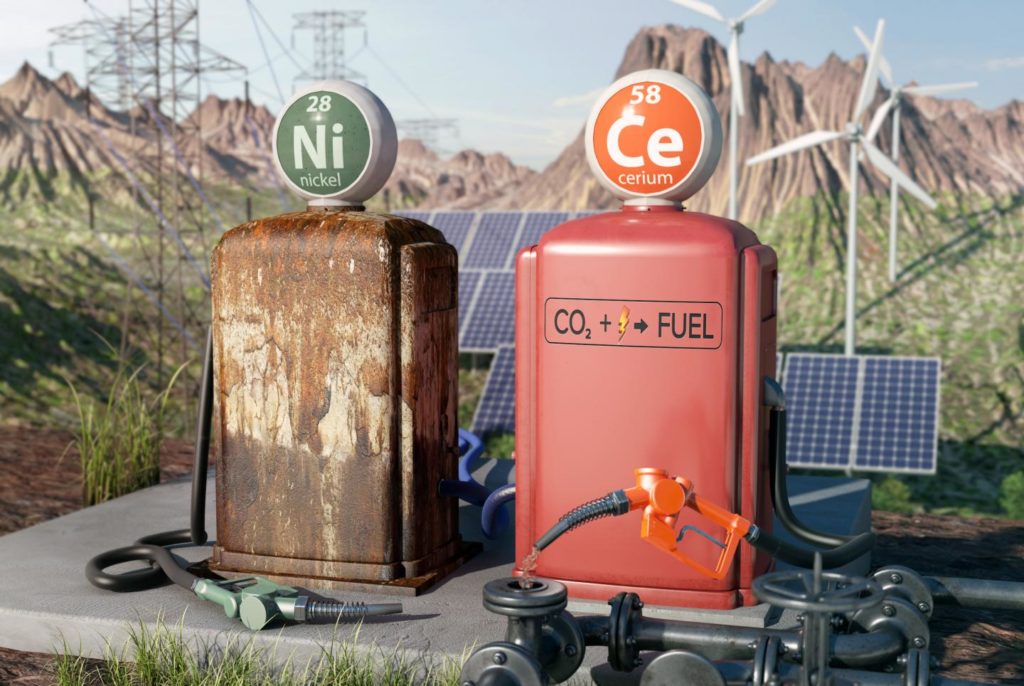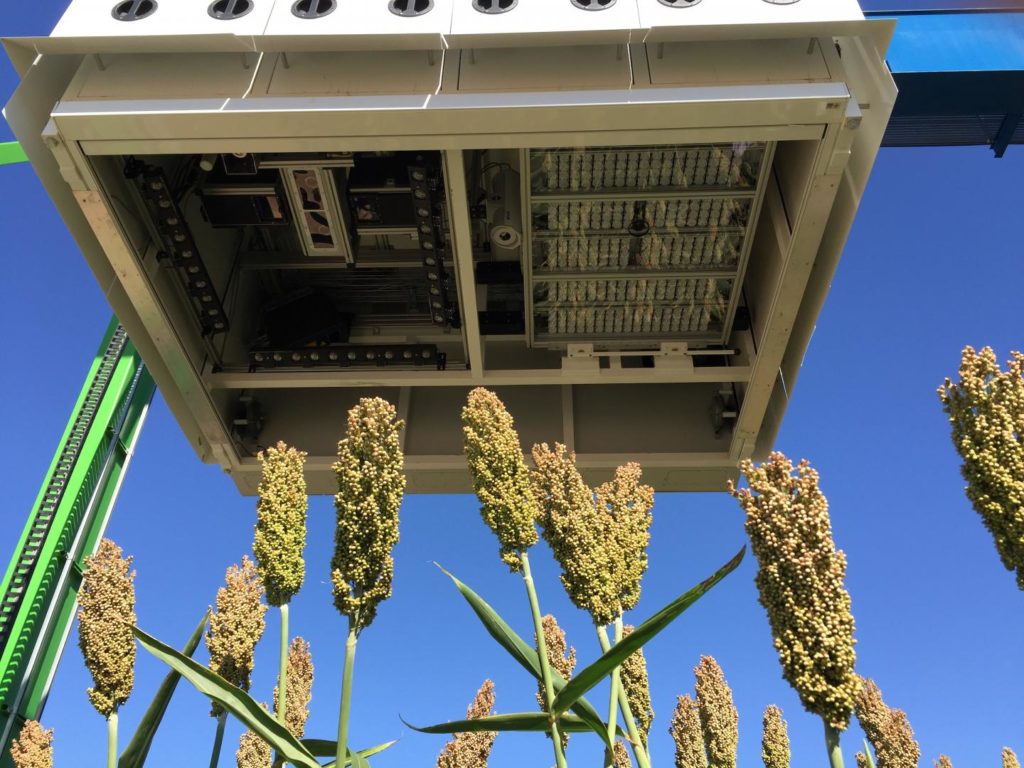The Solar Energy Research Institute of Singapore (SERIS) at the National University of Singapore (NUS), together with the World Bank Group and the Energy Sector Management Assistance Program (ESMAP) have prepared and published another comprehensive report on floating solar, the…
Tag: ENERGY SOURCES
Scientists take strides towards entirely renewable energy
Scientists from Trinity College Dublin have taken a giant stride towards solving a riddle that would provide the world with entirely renewable, clean energy from which water would be the only waste product. Reducing humanity’s carbon dioxide (CO2) emissions is…
Concordia research shows how climate change will affect hydropower production in Canada
Ali Nazemi says Quebec and Ontario’s output will increase while the west’s will suffer
KIER Identified Ion Transfer Principles of Salinity Gradient Power Generation Technology
Identified ion transfer principle with reverse electrodialysis method which is representative marine
University of Oklahoma geoscientist hopes to make induced earthquakes predictable
NORMAN, OKLA. – University of Oklahoma Mewbourne College of Earth and Energy assistant professor Xiaowei Chen and a group of geoscientists from Arizona State University and the University of California, Berkeley, have created a model to forecast induced earthquake activity…
Solar and wind energy preserve groundwater for drought, agriculture
California’s switch to solar, wind energy reduced reliance on hydropower, natural gas
University of Oklahoma geoscientist hopes to make induced earthquakes predictable
NORMAN, OKLA. – University of Oklahoma Mewbourne College of Earth and Energy assistant professor Xiaowei Chen and a group of geoscientists from Arizona State University and the University of California, Berkeley, have created a model to forecast induced earthquake activity…
Solar and wind energy preserve groundwater for drought, agriculture
California’s switch to solar, wind energy reduced reliance on hydropower, natural gas
Declaration of a climate emergency and next steps for action
Scientific consensus on the threat of climate change is well established, reaching back 40 years to the First World Climate Conference, held in Geneva in 1979. Over the ensuing decades, attendees of similar assemblies have cited the growing threat of…
Perovskite solar cells get an upgrade
Rice University materials scientists use inorganic ingredients to limit defects, retain efficiency
The truth behind the Paris Agreement climate pledges
Almost 75% of 184 Paris Agreement pledges were judged insufficient to slow climate change; Only 28 European Union nations and 7 others will reduce emissions by at least 40% by 2030
Fractionation processes can improve profitability of ethanol production
URBANA, Ill. – The U.S. is the world’s largest producer of bioethanol as renewable liquid fuel, with more than 200 commercial plants processing over 16 billion gallons per year. Plants typically use dry grind processing methods; however, implementing fractionation techniques…
Historical data confirms recent increase in West Texas earthquakes
A new analysis of historical seismic data led by The University of Texas at Austin has found that earthquake activity in West Texas near the city of Pecos has increased dramatically since 2009. The study, published Nov. 4 in the…
Fractionation processes can improve profitability of ethanol production
URBANA, Ill. – The U.S. is the world’s largest producer of bioethanol as renewable liquid fuel, with more than 200 commercial plants processing over 16 billion gallons per year. Plants typically use dry grind processing methods; however, implementing fractionation techniques…
Scientists create ‘artificial leaf’ that turns carbon into fuel
Converts harmful carbon dioxide into useful alternative fuel
Historical data confirms recent increase in West Texas earthquakes
A new analysis of historical seismic data led by The University of Texas at Austin has found that earthquake activity in West Texas near the city of Pecos has increased dramatically since 2009. The study, published Nov. 4 in the…
Scientists create ‘artificial leaf’ that turns carbon into fuel
Converts harmful carbon dioxide into useful alternative fuel
Fractionation processes can improve profitability of ethanol production
URBANA, Ill. – The U.S. is the world’s largest producer of bioethanol as renewable liquid fuel, with more than 200 commercial plants processing over 16 billion gallons per year. Plants typically use dry grind processing methods; however, implementing fractionation techniques…
Historical data confirms recent increase in West Texas earthquakes
A new analysis of historical seismic data led by The University of Texas at Austin has found that earthquake activity in West Texas near the city of Pecos has increased dramatically since 2009. The study, published Nov. 4 in the…
Scientists create ‘artificial leaf’ that turns carbon into fuel
Converts harmful carbon dioxide into useful alternative fuel
New way to date rocks
A new way to date a common mineral could help pinpoint ore deposits and improve mineral exploration globally, according to University of Queensland scientists. The researchers have identified a new reference material and used a state-of-the-art instrument to better date…
Microrobots clean up radioactive waste (video)
According to some experts, nuclear power holds great promise for meeting the world’s growing energy demands without generating greenhouse gases. But scientists need to find a way to remove radioactive isotopes, both from wastewater generated by nuclear power plants and…
Turning plastic trash into treasure
Catalytic method upcycles single-use plastic into high-quality liquid products
Lead isotopes a new tool for tracking coal ash
Tracer will help scientists monitor exposure risks of people near coal ash ponds and landfills or sites where ash is being used as fill
NREL publishes Science journal article posing three challenges to wind energy potential
Wind energy researchers from the U.S. Department of Energy’s National Renewable Energy Laboratory (NREL) are among a team of authors inviting the scientific community to address three challenges that will drive the innovation needed for wind to become one of…
Replacing coal with gas or renewables saves billions of gallons of water
Switch to natural gas would save 12,000 billion gallons a year by 2030; switching to solar or wind power would yield even greater savings
Ag-to-energy farmland use is focus of new $2.4 million grant
ITHACA, N.Y. – The U.S. Department of Agriculture and the National Science Foundation have awarded a three-year, $2.4 million grant to a team of Cornell University researchers who will study how agriculture-to-energy land-use conversions – putting solar panels or wind…
Two Harvard researchers receive the 2019 Eni Award, the ‘Nobel Prize in Energy’
Their invention could help the energy industry prioritize renewable sources like solar and wind
American Indian Science and Engineering Society recognizes early-career Sandia engineer
Award will be presented in mid-October at society’s annual conference
FSU research: Strong storms generating earthquake-like seismic activity
TALLAHASSEE, Fla. — A Florida State University researcher has uncovered a new geophysical phenomenon where a hurricane or other strong storm can spark seismic events in the nearby ocean as strong as a 3.5 magnitude earthquake. “We’re calling them ‘stormquakes,’”…
Kazan University and French National Research Agency to work on gas diffusion
The grant is financed by the Russian Science Foundation
BTI researchers unlocking hornworts’ secrets
Figuring out the genetic underpinnings of hornworts’ weird biology could help researchers boost agricultural output, use less fertilizer, and gain new insights into plant evolution
Identifying a cyanobacterial gene family that helps control photosynthesis
A new Michigan State University study has identified a family of genes in cyanobacteria that help control carbon dioxide fixation. The discovery furthers our basic knowledge of photosynthesis. It also opens new doors to design systems for sustainable biotech production.…
Combustion behavior of aromatics may provide keys to enhancing heavy oil extraction
Kazan University’s In-Situ Combustion Lab continues its inquiries in Journal of Industrial and Engineering Chemistry
Scientists quantify global volcanic CO2 venting; estimate total carbon on Earth
Scientists update estimates of Earth’s immense interior carbon reservoirs, and how much carbon Deep Earth naturally swallows and exhales
WVU awarded $5 million to continue rare earth project, build acid mine drainage treatment facility
The West Virginia Water Research Institute at West Virginia University has been awarded $5 million by the U.S. Department of Energy to scale up its successful Rare Earth Recovery Project, which will include building a facility at a new acid…
Solar cells with new interfaces
Innovative two-dimensional materials increase the efficiency
Can going nuclear combat climate change?
To mitigate climate change, the proportion of low-carbon electricity generation must increase from today’s 36% to 85% by 2040, the International Energy Agency (IEA) says. IEA and other advocates argue that nuclear power could help fill this gap. However, barriers…
Potentially large economic impacts of climate change can be avoided by human actions
People are less motivated to take actions if its outcome is uncertain, and this could be true for climate-related issues. The uncertainty in climate response to the increase in greenhouse gas concentration, which is often believed to be substantially large,…
Exploring the future of coal power in water scarce Asia
Many aspects of modern energy systems necessitate access to reliable water resources. The findings of a new study involving IIASA researchers shows that Developing Asia’s long-term electricity generation plans – which relies heavily on coal power generation – could be…
Improvements to rheology measurements in reservoirs proposed by Kazan Federal University
The research was published in Journal of Petroleum Science and Engineering
Department of Energy picks Carnegie Mellon and NAWI to lead Energy-Water Desalination Hub
Carnegie Mellon’s College of Engineering has been chosen to be part of the U.S. Department of Energy (DOE) Energy-Water Desalination Hub as a founding member of the National Alliance for Water Innovation (NAWI) . Civil and Environmental Engineering Professor Greg…
New report deepens understanding of wind-wildlife interactions
The Ecological Society of America (ESA) announces the publication of a new report , “Impacts to Wildlife of Wind Energy Siting and Operation in the United States,” in ESA’s Issues in Ecology publication. An increase in the generation of wind…

New route to carbon-neutral fuels from carbon dioxide discovered by Stanford-DTU team
If the idea of flying on battery-powered commercial jets makes you nervous, you can relax a little. Researchers have discovered a practical starting point for converting carbon dioxide into sustainable liquid fuels, including fuels for heavier modes of transportation that…

UBC researchers design roadmap for hydrogen supply network
Hydrogen supply chain model can enable the adoption of zero-emission, hydrogen-powered cars across B
Study offers verdict for China’s efforts on coal emissions
Researchers from China, France and the USA have evaluated China’s success in stemming emissions from its coal-fired power plants (CPPs). CPPs are one of the main contributors to air pollution in China, and their proliferation over the last 20 years…
Since cooling demand is primarily driven by the sun, could it also be powered by the sun?
The study is a collaborative effort of an international team of solar energy experts from Aalto University of Finland, Massachusetts Institute of Technology and SMART (Singapore-MIT Alliance for Research and Technology). It analyses the intersection of two dominant trends in…

It’s not about self-driving cars, it’s about more people in fewer vehicles
FAU researcher says pooled-ride services key for sustainability and reducing traffic congestion

DOE taps Danforth Plant Science Center for research to improve sorghum as a bioenergy crop
ST. LOUIS, MO, September 9, 2019 – The U.S. Department of Energy (DOE) through its Office of Biological and Environmental Research (BER) has launched a major initiative to develop bioenergy crops through genomics-based research. Danforth Center Principal Investigator, Andrea Eveland,…
To reduce pollution, policymakers should broaden focus beyond smokestacks
Emissions from air pollutants are associated with premature mortality. Between 2008 and 2014, air pollution health damage from fine particulate matter exposure fell by 20 percent in the United States. There are four sectors in the U.S. economy that together…